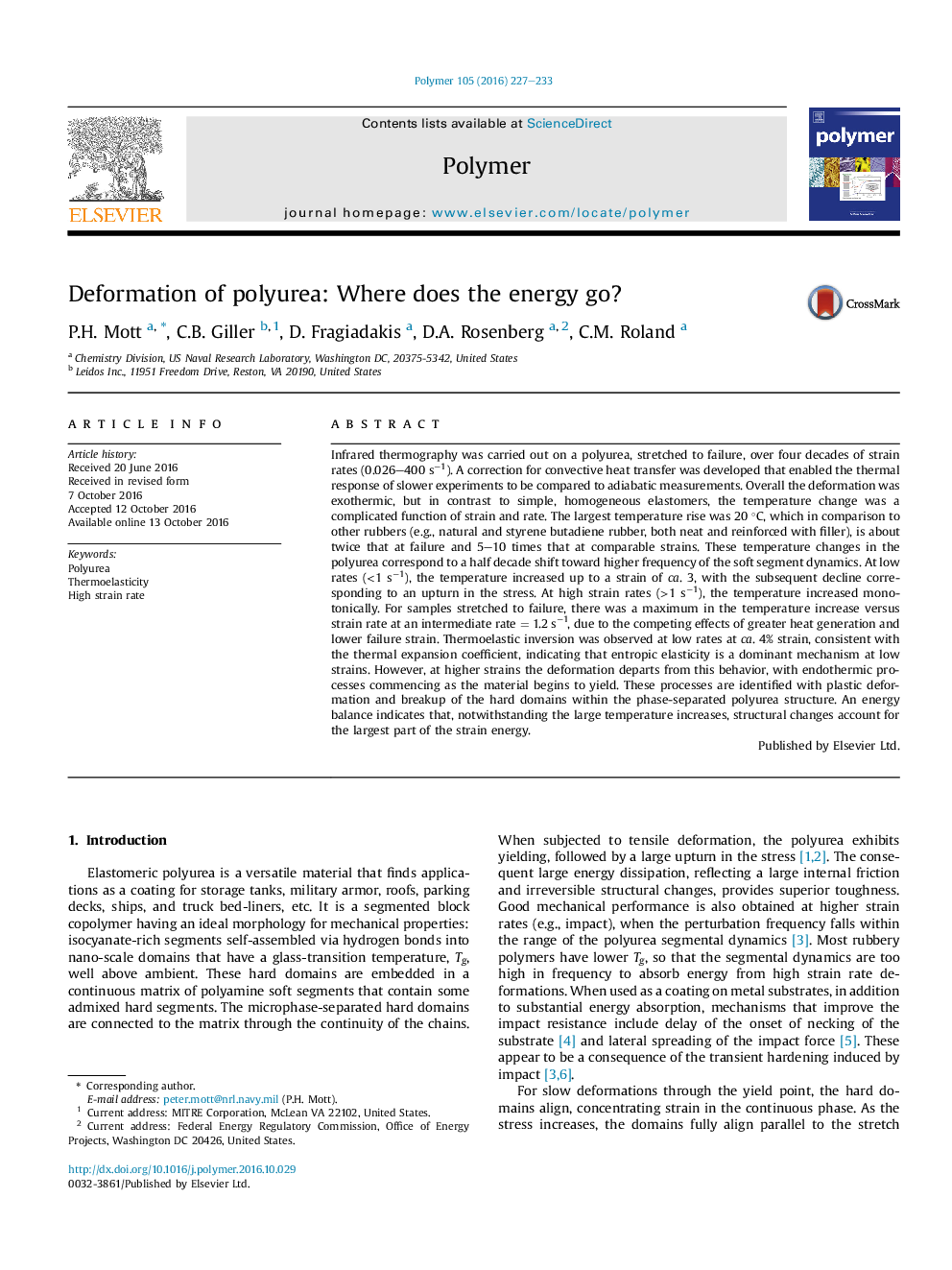| کد مقاله | کد نشریه | سال انتشار | مقاله انگلیسی | نسخه تمام متن |
|---|---|---|---|---|
| 5178865 | 1502501 | 2016 | 7 صفحه PDF | دانلود رایگان |

- Polyurea heats 5-20 °C during strain (5-10 Ã normal rubbers).
- Heat increases with rate.
- 75% of energy goes to structural changes.
- Low strain, low rate thermoelastic inversion: elasticity is entropic.
- Highest rates: full recovery, constant thermal energy fraction; entropic elasticity.
Infrared thermography was carried out on a polyurea, stretched to failure, over four decades of strain rates (0.026-400 sâ1). A correction for convective heat transfer was developed that enabled the thermal response of slower experiments to be compared to adiabatic measurements. Overall the deformation was exothermic, but in contrast to simple, homogeneous elastomers, the temperature change was a complicated function of strain and rate. The largest temperature rise was 20 °C, which in comparison to other rubbers (e.g., natural and styrene butadiene rubber, both neat and reinforced with filler), is about twice that at failure and 5-10 times that at comparable strains. These temperature changes in the polyurea correspond to a half decade shift toward higher frequency of the soft segment dynamics. At low rates (<1 sâ1), the temperature increased up to a strain of ca. 3, with the subsequent decline corresponding to an upturn in the stress. At high strain rates (>1 sâ1), the temperature increased monotonically. For samples stretched to failure, there was a maximum in the temperature increase versus strain rate at an intermediate rate = 1.2 sâ1, due to the competing effects of greater heat generation and lower failure strain. Thermoelastic inversion was observed at low rates at ca. 4% strain, consistent with the thermal expansion coefficient, indicating that entropic elasticity is a dominant mechanism at low strains. However, at higher strains the deformation departs from this behavior, with endothermic processes commencing as the material begins to yield. These processes are identified with plastic deformation and breakup of the hard domains within the phase-separated polyurea structure. An energy balance indicates that, notwithstanding the large temperature increases, structural changes account for the largest part of the strain energy.
259
Journal: Polymer - Volume 105, 22 November 2016, Pages 227-233